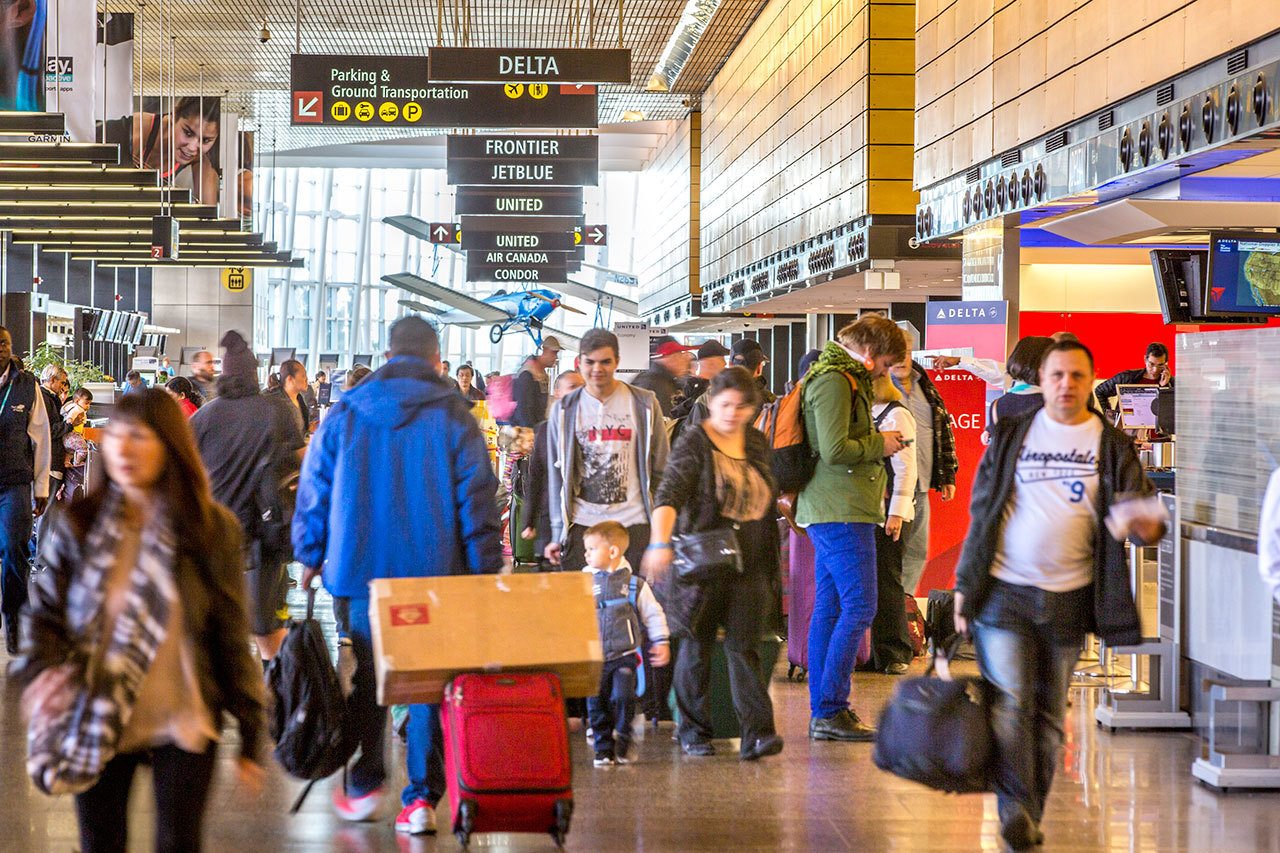For the sixth year in a row, Seattle-Tacoma International Airport has set passenger travel records, making it the ninth busiest airport in the U.S.
The airport served 45.7 million passengers, an 8-percent increase – 3.4 million more passengers than in 2015. The 8-percent passenger growth rate is Sea-Tac’s second largest in the past 20 years, only topped by 2015’s 12.9 percent increase. International travel also increased in 2016 – 11.1 from 2015.
The record growth vaults Sea-Tac to the 9th busiest U.S. airport based on passenger volume, up from the 13th spot. Sea-Tac moved past Houston, Phoenix, Miami and Charlotte to claim the No. 9 spot, based on data from the Official Airline Guide and airport websites. Sea-Tac Airport has an average of 125,000 passengers per day, which would make it Washington’s fifth largest city or double the capacity of Seattle’s pro football stadium.
“Sea-Tac is working with the region to be a world-class airport for the community,” said Port of Seattle Commission President Tom Albro. “Some benefits of growth are easy to see, such as more domestic and international direct flights, more airlines and capital improvement projects to better serve customers. We are also increasing our investments in workforce development and environmental programs to ensure that a busier airport means broader community opportunities.”
Supporting Local Communities
“Sea-Tac Airport is an economic engine for our region and the increased passenger totals are a driver for more jobs and benefits to business owners who rely on travelers,” said Katherine Kertzman, president and CEO of Seattle Southside Regional Tourism Authority. “By the end of 2018, we expect more than 1,200 new hotel rooms in our Southside region. This building boom means more jobs now and into the future and the airport is a big reason for this increase.”
The most recent available data from 2015 shows visitors spent more than $665 million just in the Seattle Southside area. That spending generated close to $70 million in state and local taxes.
New jobs and workforce development
Sea-Tac supports more than 109,000 direct jobs, including 18,500 people working at the airport, and tens of thousands more in airline services, freight transportation, construction or tourism. The Port of Seattle connects job seekers and current employees to new opportunities and skills through programs like Port Jobs – which helped more than 1,500 people find positions in 2016 – Airport University, which offers college level courses at the airport, and through workforce development partnerships with schools and labor unions.
Sea-Tac: An international business hub
International passenger traffic in 2016 increased 11.1 percent over 2015 for a total of nearly 4.9 million travelers. Sea-Tac welcomed two new international carriers in 2016 – Volaris (Guadalajara, Mexico) and Xiamen (Shenzhen, China). Asia is Sea-Tac’s biggest international destination; passenger traffic to the region increased 4.1 percent in 2016.
Air Cargo tallies big gains in 2016
Total air cargo went up for the fifth straight year in 2016, increasing 10.2 percent to more than 366,000 metric tons. Four new air freight carriers in 2016 – DHL, AeroLogic, PrimeAir, and AirBridgeCargo – helped boost the total. Domestic air freight shot up 20 percent to 194,754 metric tons in 2016. Sea-Tac was the first U.S. airport in 2016 to welcome the Amazon-branded Prime Air 767 cargo aircraft into service.
Ready for the future
To accommodate more passengers and airlines, the port is investing more than $2 billion in capital improvement projects, including the North Satellite Modernization project, a new International Arrivals Facility and new baggage handling system. The capital improvement projects will add more gates to the airport, more than double North Satellite dining and retail establishments and create a direct connection to the terminal and more baggage and passport services for international travelers.
Talk to us
Please share your story tips by emailing editor@kentreporter.com.
To share your opinion for publication, submit a letter through our website https://www.kentreporter.com/submit-letter/. Include your name, address and daytime phone number. (We’ll only publish your name and hometown.) Please keep letters to 300 words or less.

